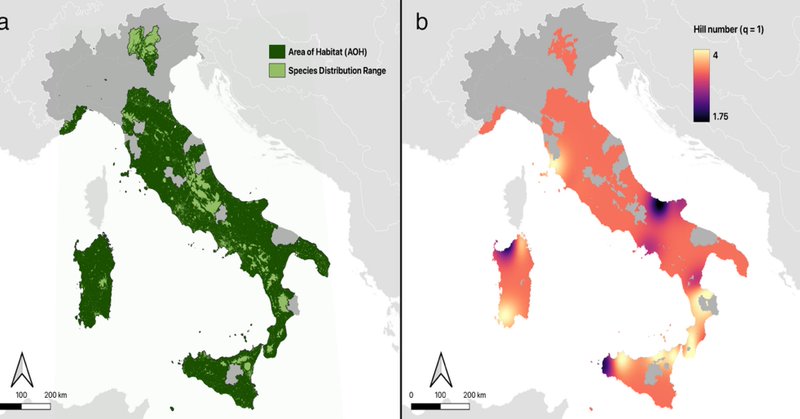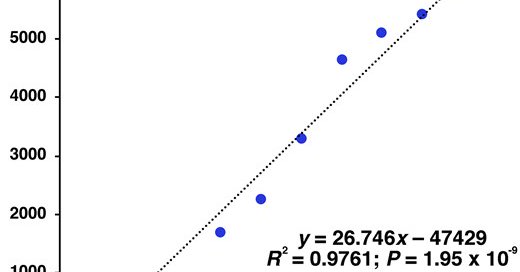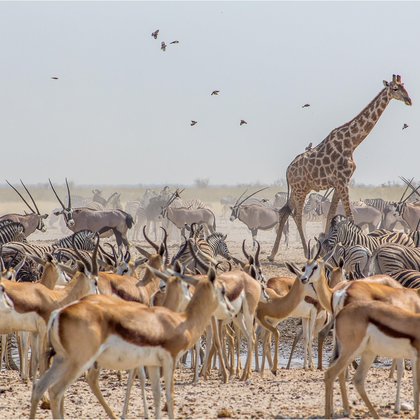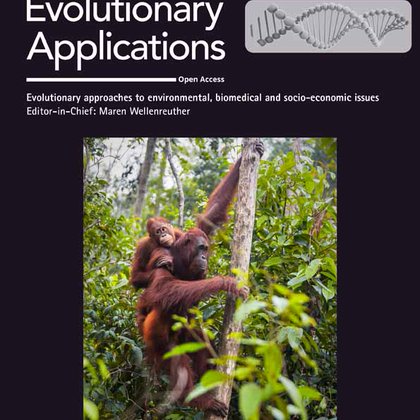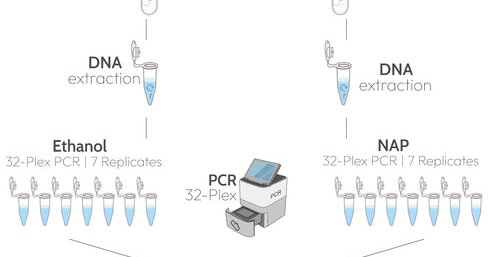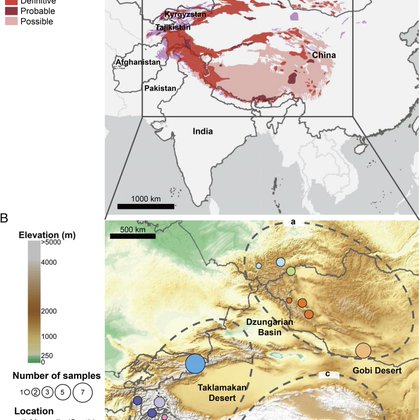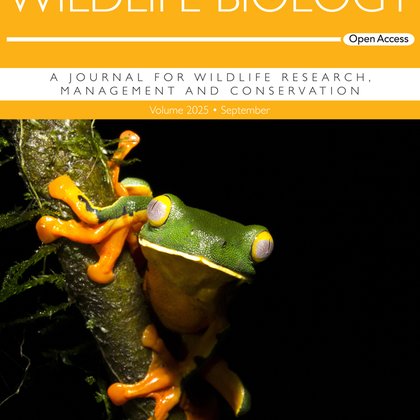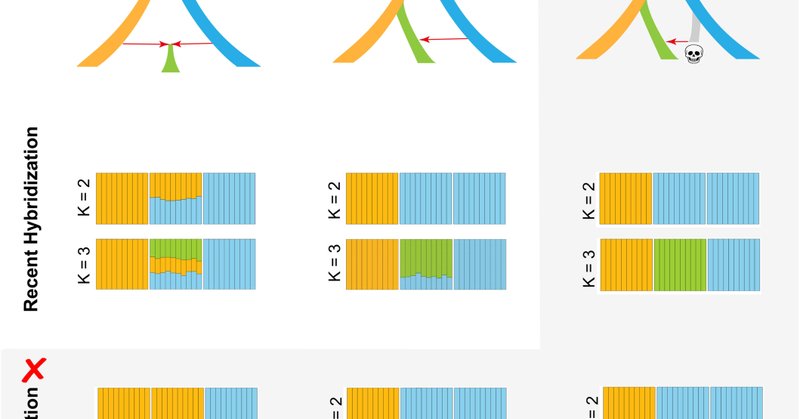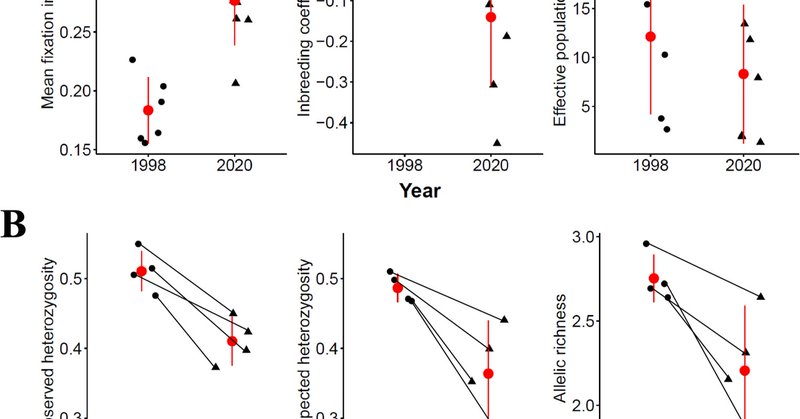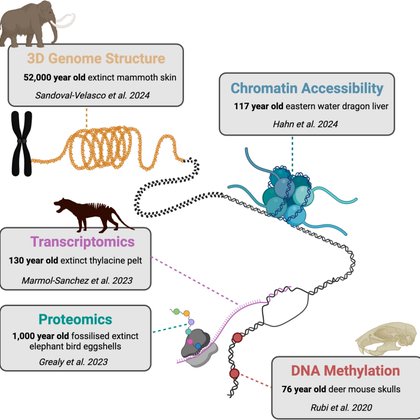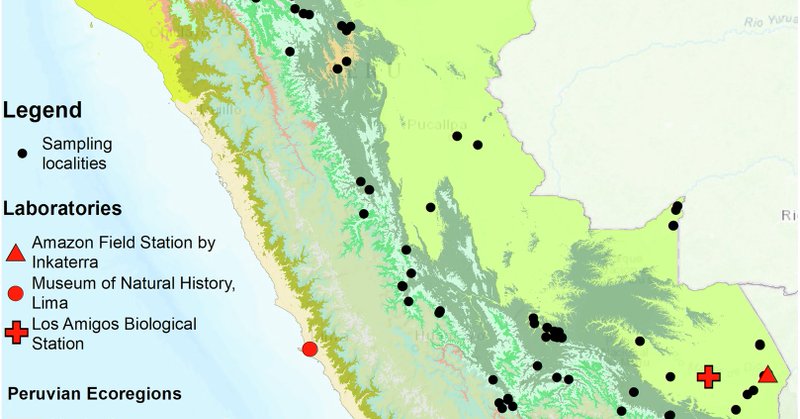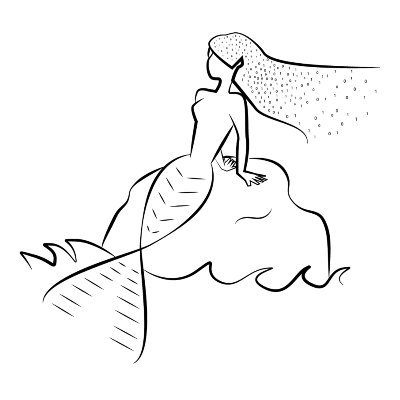
Dr. Laura Bertola
@LauraDBertola
Followers
2K
Following
9K
Media
1K
Statuses
8K
Scientist👩🔬/Biologist🦁/Conservationist🌍 @UniLeiden, @CUNY, @uni_copenhagen, currently @NCBS_Bangalore; Chair #LeoFoundation; 🌌 lauradbertola.bsky.soci
Joined April 2015
I'm just going to take a look what it's like in that other place🌌. Come find me on BlueSky:
0
0
2
Mapping genetic and phylogenetic diversity inside and outside protected areas for effective conservation of selected IUCN Red-Listed insects’ species https://t.co/w9YNclO6sr
link.springer.com
Journal of Insect Conservation - Genetic diversity, a key component of biodiversity, is often overlooked in conservation actions and there is limited information on how well protected areas...
0
0
5
Biodiversity conservation depends on the expansion of taxonomy and systematics research https://t.co/7Cx0N40zcy
academic.oup.com
Abstract. Despite mammals constituting fewer than 0.3% of all described species, their conservation is compelling for a number of reasons. They contribute
0
28
53
📣📣📣 CONSERVATION GENETICS WORKSHOP - Few more spaces left! ConGen Population Genomic Data Analysis Course 🧬💻💡 University of Pretoria, South Africa 🌍 7-14 December + field trip to Kruger NP! 🦁🐃🐘🐆🦏 More info & registration here: https://t.co/4R3EwU5Z1Y
0
7
21
Equity in science is a beautiful lie — and I’m done pretending
nature.com
Nature - Science isn’t really moving towards equity; institutions are just perfecting the appearance of equity. We need to build an alternative system.
0
0
8
Predicting the way forward for the Global Biodiversity Framework
pnas.org
Predicting the way forward for the Global Biodiversity Framework
0
5
19
Anthropogenic factors shape the gut microbiota of tigers in Indian tiger reserves
0
1
3
Very interesting conference, discussing the state and future for lions in West, Central and North Africa, and the potential role for the royal lions of Morocco @rabatzoo. Also, this was the first time I actually had lions in the audience during my talk! 🦁
0
0
9
Estimating the Effective Population Size Across Space and Time in the Critically Endangered Western Chimpanzee in Guinea‐Bissau: Challenges and Implications for Conservation Management https://t.co/cqanW0lteN
onlinelibrary.wiley.com
The western chimpanzee (Pan troglodytes verus) is a Critically Endangered taxon. In Guinea-Bissau (GB), the subspecies is increasingly threatened, but there is a lack of understanding regarding the...
0
8
26
Impact of two field preservation methods on genotyping success of feces https://t.co/tYZs3RJORE
peerj.com
Non-invasive samples, such as feces, remain an important source of DNA for genetic analyses in molecular ecology and conservation genetics, especially when working with elusive or endangered species....
0
1
2
~3 years ago, I was invited to contribute to a book on the state of lions in Africa, an effort bringing together >30 scientists, conservationists, writers, and wildlife photographers. Very exciting that it is now about to be published by Penguin Books! https://t.co/OuWWML6qxg
1
3
16
Chromosome-scale genomes show rapid diversification and ancient gene flow among bear species
academic.oup.com
Abstract. Reconstructions of evolutionary history can be restricted by a lack of high quality reference genomes. To-date, only four of the eight species of
0
2
3
Exceedingly low genetic diversity in snow leopards due to persistently small population size https://t.co/qX7i6LjQaH
pnas.org
Snow leopards (Panthera uncia) serve as an umbrella species whose conservation benefits their high-elevation Asian habitat. Their numbers are belie...
0
1
2
DNA metabarcoding reveals wolf dietary patterns in the northern Alps and Jura Mountains https://t.co/3peGodcZqL
nsojournals.onlinelibrary.wiley.com
Understanding predator–prey interactions is crucial for wildlife management and human–wildlife coexistence, particularly in multi-use landscapes such as western Europe. As wolves Canis lupus recolo...
0
0
2
A cautionary note on using STRUCTURE to detect hybridization in a phylogenetic context https://t.co/dl3e7iRSym
onlinelibrary.wiley.com
Using simulations, we provide the first systematic evaluation of the performance of STRUCTURE under a variety of cross-species hybridization scenarios. We find that STRUCTURE performs well in...
0
21
55
Genetic monitoring reveals loss of genetic variation and increased isolation in an endangered pond-breeding amphibian https://t.co/tmnPgYx8nl
link.springer.com
Conservation Genetics - Empirical knowledge on how genetic diversity changes through time in populations in the wild is extremely limited. This study aims to contribute toward a better...
0
0
1
Assessing the Performance of Environmental DNA Metabarcoding in Fish Diversity Surveys of the Texas Gulf Coast https://t.co/heXmkh9iUN
link.springer.com
Estuaries and Coasts - As natural and anthropogenic disturbances to coastal ecosystems increase in frequency and intensity, the need for efficient and cost-effective biodiversity survey methods...
0
0
3
The rise of historical epigenomics and temporal analysis of gene regulation https://t.co/aoC8iF2z69
link.springer.com
Complex diseases driven by gene-environment interactions impose a heavy burden on human and animal health. Addressing these challenges requires innovative research. The emerging field of historical...
0
0
1
Decoding the Peruvian Amazon with in situ DNA barcoding of vertebrate and plant taxa https://t.co/2LG7TkFYiD
nature.com
Scientific Data - Decoding the Peruvian Amazon with in situ DNA barcoding of vertebrate and plant taxa
0
1
5
📣📣📣 New paper out, this time on Indonesian cattle genomics 🌏🐂🐃🐄🇮🇩 Genomic resources for cattle are important, not only to better understand their evolutionary histories, but also because they can contribute to sustainable farming and food security. Congrats to all!
Our new paper on Indonesian cattle #genomics is out on @NatureComms 🎉 Did you know Indonesian #cattle 🐂 were a mix of two species? Great work: @XiWang91099530 @sagitaninta @HellerRasmus @casia16 Read 👉 https://t.co/WIXTpzpHT1
#popgen #evolution 🧵
0
1
6
Assessing the conservation effectiveness of theWorld’s protected areas: A habitat quality and human activities perspective https://t.co/8zjVv1eizS
0
1
5

